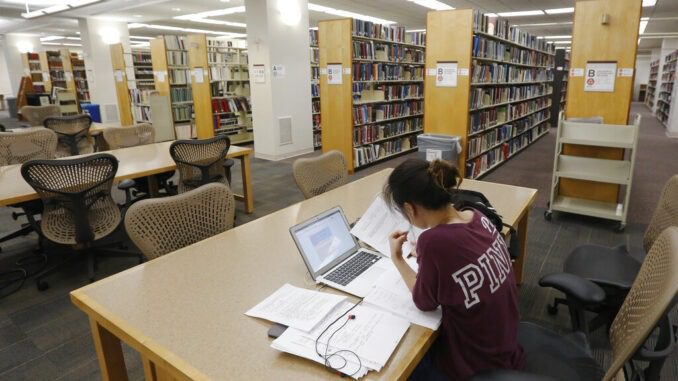
Talk of student loan forgiveness has borrowers looking forward to 2021. But many already benefited from some unprecedented events in 2020:
— An administrative forbearance has paused most federal loan payments interest-free since March.
— The forbearance has also halted collections on defaulted loans.
— Interest rates fell to historic lows.
It’s unclear how long these breaks will last. If you’re in good financial shape, here’s how to take advantage of them while you can.
MAKE A LUMP-SUM PAYMENT
The current student loan forbearance is scheduled to end Jan. 31. All borrowers should have a plan for repayment by that point.
If you’ll be able to afford your pre-pandemic payment amount, consider putting extra money toward your loans now.
Student loan payments must first cover outstanding interest. But with those charges paused since March, a lump-sum payment would put a direct dent in what you owe.
“By and large, the majority of students will not have any sort of interest accrual,” says Stacey MacPhetres, senior director of education finance at Bright Horizons, which provides workplace employee services, including education advice.
One exception could be recent college graduates whose loans have yet to enter repayment. Those could have multiple years of accrued interest.
For example, say you took out $5,500 in unsubsidized loans at 4% interest freshman year. Four years later, those loans could have accrued close to $900 in interest to be added to your principal balance when your grace period ends. If you pay that interest off before then, you’ll stop future interest from growing on a bigger balance and pay less overall.
MacPhetres says the “fervor” around forgiveness has some borrowers balking at extra payments. But there are no guarantees that debt will be canceled.
“Unless something happens, you will be expected to go back into repayment,” she says.
If your payments will be too expensive, reach out to your servicer about options like income-driven repayment.
GET OUT OF DEFAULT
Federal student loan default has consequences like wage garnishment and loss of tax refunds and Social Security payments. These actions are also scheduled to restart in February.
To avoid collection activities, address defaulted loans as soon as possible. You have two primary options to do this: consolidation and rehabilitation.
Federal student loan consolidation can pay off your defaulted loan and replace it with a new one. This can quickly fix a default if you choose an income-driven plan for your new loan.
“If the borrower thinks they might be subject to a Social Security offset or a tax offset, speed might be important,” says Persis Yu, director of the nonprofit National Consumer Law Center’s Student Loan Borrower Assistance Project.
Rehabilitation takes at least nine months of on-time payments and returns your defaulted loan to good standing. This removes the default from your credit report, but not the late payments leading up to it.
Months spent in the current administrative forbearance count toward rehabilitation. If that break is extended through September, as some lawmakers have proposed, that could cover the entire rehab process if you enroll by the end of 2020.
With both options, Yu says to ask yourself, “Is now a good time to take this step?”
It won’t be if you can’t afford payments and default again. An income-driven plan could help, but Yu says those payments aren’t always affordable. A tool like the Department of Education’s Loan Simulator can help you estimate potential costs.
REFINANCE PRIVATE LOANS
Refinancing replaces your student loans with a new loan from a private lender. Don’t refinance federal loans until it’s clear whether the administrative forbearance will be extended.
But private student loans don’t qualify for that benefit, and refinancing them could save you money.
“With interest rates so low, most private student loan borrowers are able to lower that interest rate pretty significantly,” says Jared Andreoli, a certified financial planner and president of Simplicity Financial in Milwaukee.
For example, refinancing a $10,000 private loan from 10% to 5% interest would decrease your monthly payments by $26 and save you $3,130 overall, assuming a 10-year repayment plan.
You’ll need a FICO credit score in at least the high 600s and steady income to qualify for refinancing. Refinance private loans as soon as you, or a co-signer, meet those qualifications.
While the Federal Reserve has indicated interest rates will remain low, Andreoli says that doesn’t mean refinancing rates will keep falling.
“If people are holding out for a lower rate,” he says, “now is the time to act.”


